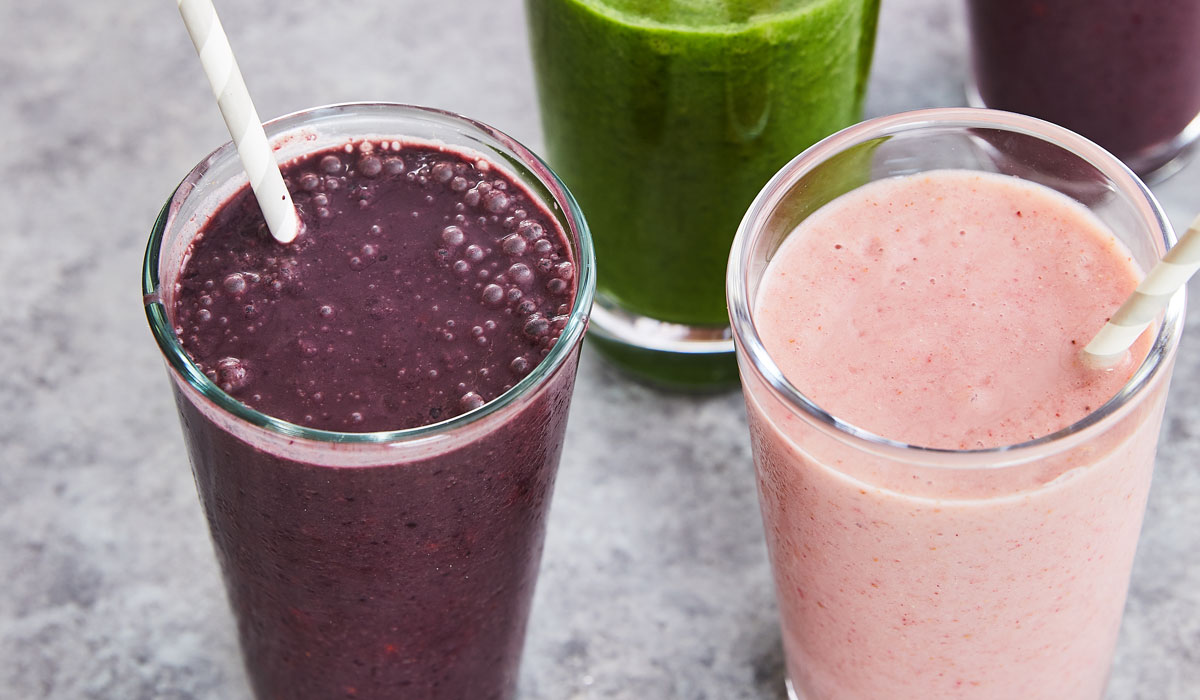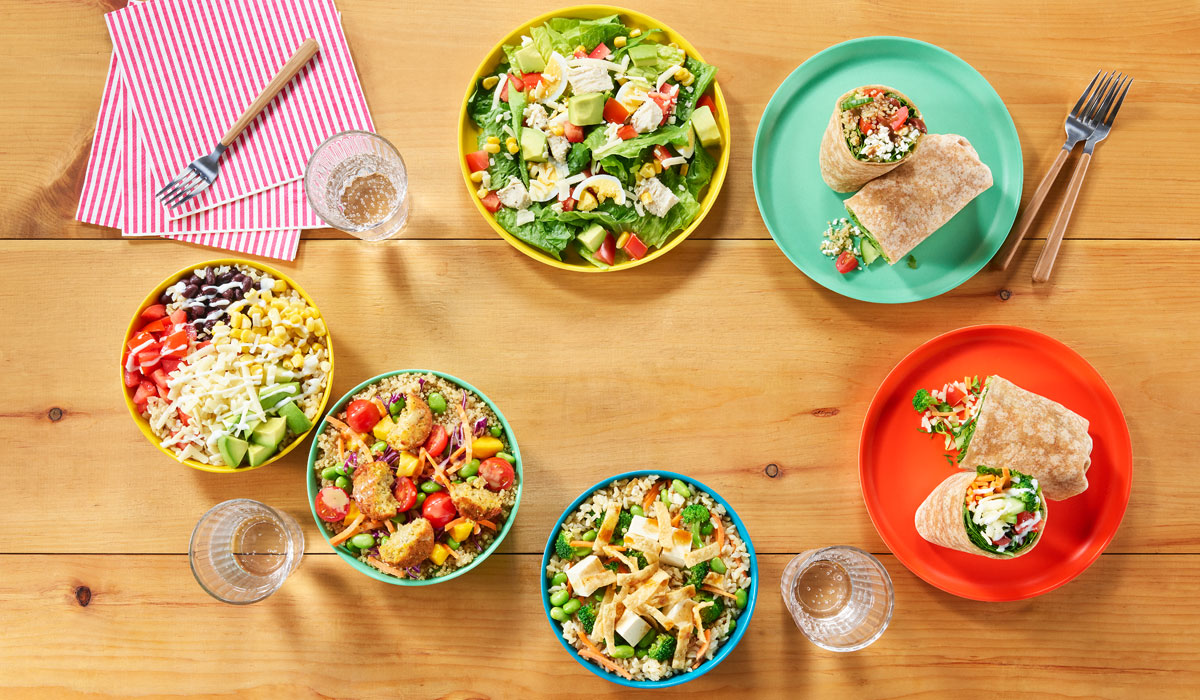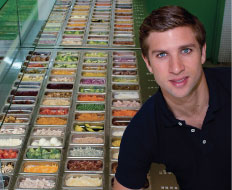Every generation has its defining characterizations: The open-minded and entitled millennials. The penny-pinching, workaholic baby boomers.
But what of the digital-native Gen Zers and those after them who haven’t yet reached middle school? Gen Z (ages 13–24) alone comprises 52 million Americans, representing some 16 percent of the U.S. population and buying power in excess of $500 billion, according to a 2018 study by Packaged Facts.
The members of this youngest generation are the most diverse in U.S. history and are open to a broader range of cuisines given their exposure to international flavors from a young age at home and in restaurants; 36 percent of U.S. parents of children under 18 say their kids enjoy international food, per Mintel’s 2018 Global New Products Database. Health-conscious millennial parents have passed on nutrition concerns to their children, meaning the youngest consumers are already looking for transparency in nutrition rather than the “stealth health” approach operators relied on in years past.
The digitally native upbringing of today’s youth means they’ve grown up with the ability to thoroughly research their hobbies and interests, meaning they deeply value creative expression and customization. Social media unsurprisingly wields considerable influence over them, too. Not only is YouTube the second-most-common source of information (behind TV) for kids aged 6–17, but 34 percent consider social media stars to be among their top role models, ahead of athletes, actors, and musicians, according to Mintel’s 2018 “Marketing to Kids and Tweens” report.
Moms and dads carry the most influence, however, with 86 percent of kids saying their parents are their top role models. Indeed, today’s parents seem to be taking a different approach than previous generations when it comes to raising kids. Nearly half (47 percent) say they give their kids more of a say in family decisions than their parents gave them, and another 47 percent say they are closer with their kids than their parents were with them, per Mintel.
So what does all this data tell us? That even the youngest consumers have a unique identity and a voice, and operators would be remiss to underestimate their impact.
The regular menu, pint-sized
“There is no one-size-fits-all when it comes to kids menus,” says Sharon Olson, executive director of Chicago-based food-focused youth marketing research practice Y-Pulse. “In fact, some of the best things we have seen are from chef-driven, family-casual restaurants that don’t have a dedicated kids menu but have lots of kid-friendly items on the regular menu.”
Some 91 percent of kids surveyed for Y-Pulse’s 2018 kids dining study said they like the choices on regular menus, affording operators room to tweak aspects of the adult menu to make them more appealing to young diners. Olson points to Asheville, North Carolina–based Tupelo Honey Café, whose children’s menu comprises smaller portions of adult menu items like house-made black-bean veggie burgers and pulled pork. There’s also a composed “dish” called Color My Plate, in which kids pick three of their favorite vegetables off of the side-dish menu. (After all, 87 percent of kids like restaurants that let them customize their meals, per the Y-Pulse survey.)

Denver-based Mediterranean chain Garbanzo similarly offers smaller portions of regular menu items, like the grilled chicken or steak rice bowl with a choice of nearly 20 veggies, spreads, and sauces, or the half stuffed pita with choice of protein, spreads, veggies, and sauces. The sole child-aimed item is a pita grilled cheese. All options come with sliced apple, organic regular or chocolate whole milk, or soda, with calorie totals ranging from 200 to 575.
The customizable ordering setup both allows parents to teach by example through their own topping choices and empowers kids to create entrées that are just right for them, says marketing director Devin Handler. It even offers refunds for kids who don’t like what they choose.
The brand also encourages curiosity about its healthy Mediterranean ingredients, offering a free falafel to every adult and kid who comes through the doors. “We do that because ‘falafel’ is a scary word,” Handler says. “Watching kids eat falafel for the first time, their eyes light up. Then next time they want it in their entrée. And just like that, we broke through an obstacle to eating healthy. They see that a nutritionally dense food can taste amazing, and that opens the door to hummus, baba ganoush, and tabouli.”
Garbanzo was one of the brands that answered a call from former Panera CEO Ron Shaich, who in 2017 challenged quick-service CEOs to eat from their kids menus for a week, lamenting their lack of nutrient-dense options. (Shaich issued the challenge concurrently with Panera’s announcement that it would start offering kid-sized versions of everything on its regular menu.) Garbanzo CEO James Park and the management team not only ate kids meals from September 24 to 30, but the chain also donated $1 to a local children’s hospital for every kids meal purchased that week, raising $1,500. The promotion has since become annual and now takes place for the whole month of September.
“[Shaich] wasn’t really pointing to brands like fast casual, because he knew that was where there were a lot of folks who could make the claim and maybe even make it better,” Handler says. “But we completely commended the idea and initiative.”
The problem with defaults
Even as the country’s four biggest fast-food chains—McDonald’s, Burger King, Wendy’s, and Subway—have replaced soda on kids-meal menus with low-fat milk, water, and 100 percent juice, and even as McDonald’s and Subway have pledged to make fruit and vegetable sides available, that hasn’t necessarily translated to parents purchasing healthier options for their kids more often. This is according to a study by the University of Connecticut’s Rudd Center for Food Policy and Obesity that documented 800 parents’ purchases at McDonald’s, Burger King, Wendy’s, and Subway for their children through online surveys in 2010, 2013, and 2016.
Between 2010 and 2016, the percentage of parents who bought kids meals with healthier drinks remained roughly the same, at 59–60 percent. From 2013 to 2016, the percentage of parents who purchased kids meals with healthier sides actually declined, from 67 percent in 2013 to 50 percent in 2016. Some of this has to do with inconsistencies in-store; for instance, some locations still automatically include fries or sodas with meals. But it’s also due to incongruence between intention and behavior, since almost all parents surveyed by Rudd said they would buy food for their children at those restaurants more frequently because of the healthy offerings.

And parents are indeed visiting quick-service chains more often. Some 91 percent of those surveyed in 2016 said they had purchased a meal for their child at one of the four largest fast-food chains in the past week, up from 79 percent in 2010. Interestingly, these results align almost perfectly with a 2017 Y-Pulse kids’ dining survey, in which 92 percent of kids said fast food is their favorite dining experience away from home—up from 70 percent in the 2010 study that asked the same question.
Recent years have seen the rise of fast-casual chains with healthier takes on fast food aimed at busy millennials, like Boston-based B.Good, which serves burgers, grain bowls, and smoothies featuring seasonal, sustainably sourced ingredients. The brand’s focused kids menu includes local, all-natural chicken sandwiches and beef, turkey, and veggie burgers; grilled cheese on wheat; all-natural hot dogs; and Kale Crush smoothies. Sandwiches come with a choice of regular or sweet potato fries—and, like the rest of the menu, B.Good has scarcely changed these options in the nine years since it debuted a kids menu.
“We have tested different items in the past, such as sliced carrots and broccoli cheddar tots, but in general, our kids offerings have remained consistent because of their proven success,” says executive chef Linh Aven. Today’s parents factor local and sustainable into the wholesome eating equation, she adds. “Few other fast-casual restaurants have strong kids-meal offerings today, and even fewer have options for kids that are well-balanced and sustainably sourced,” she says, noting that the latter half of that equation is a “way of life” for millennials rather than a fleeting trend.
School-lunch refresh
Healthy grab-and-go brand Freshii went a step beyond its four walls to target another area still dominated by convenient, albeit nutritionally deficient kids-meal options: school foodservice. Its recently launched kids-lunch program, developed by in-house nutritionist Andie Shapira, features wraps, bowls, and salads adapted from the regular Freshii menu and that are half the portion size.
“We wanted to develop colorful, exciting menu items with enough protein, fiber, complex carbohydrates, and other ingredients that would fuel kids throughout day and help them avoid that afternoon sugar crash,” Shapira says.
Options include a whole-wheat Cobb Wrap packed with romaine, avocado, eggs, cheddar, tomatoes, corn, and Greek-yogurt ranch, as well as a Rainbow Bowl with quinoa, carrots, mango, cabbage, edamame, cherry tomatoes, and honey Dijon dressing. They differ slightly from the kids menu at the restaurants to keep things interesting and because certain in-store items, like the quesadilla, don’t transport well.
At the same time, the menu had to be broad enough to satisfy the wide-ranging nutritional guidelines of each jurisdiction. For instance, each region has a different sodium limit, and certain school-lunch guidelines prohibit the use of artificial colors and sweeteners.
Because each school district also has different requirements regarding pickups and deliveries—“Some want things delivered by classroom, others alphabetically; some are able to pick up food,” Shapira says—franchisees are empowered to work out the logistics individually with each school.
A few months into the program, Shapira wouldn’t comment on performance, but said feedback has been positive. “Schools are thrilled to have options outside of pizza or subs, and parents feel at ease that their kids have healthy, affordable options,” Shapira says. “It’s exciting to be part of something that is having a positive effect on kids. They’re in the process of forming habits that will carry them throughout their lives.”

A hard look in the mirror
Really understanding how brands are performing with families and kids, however, may first require facing a few hard truths. Atlanta-based McAlister’s Deli always prided itself on being a gathering place for families, but a deeper examination of customer feedback early last year painted a different picture and led to a total overhaul of the kids menu and in-store experience to focus more on interactivity.
“We looked at our overall target—millennial moms with two kids under 10 years old—but our overall percentage of sales wasn’t tracking to where we thought it should be with kids,” says vice president of marketing Robert Dimson, noting that kids meals were accounting for 2.5 percent of sales. “We dug deeper and found out that our guests had some little pain points with the menu and how it was structured.”
The brand teamed with kid-focused creative marketing agency Spirit to conduct in-depth interviews with parents and kids under 12 in Dallas and Chicago last summer. It discovered that presenting the kids menu on handouts rather than on the menuboard made parents feel like kids were an afterthought, and that the breadth and variety of options created stress for parents. Kids, on the other hand, wanted more interactive food that they could eat with their hands, along with more to keep them engaged in-store.
McAlister’s streamlined the kids-menu offerings, adding handhelds like smoked turkey, ham, and chicken roll-ups, as well as chicken and broccoli bowls and salads. The new menu is presented with an easy-to-follow format, including window clings at kids’ eye level and large menus that visually lay out the entrée, side, and drink ordering process. The chain also started handing out activity packets featuring games and puzzles that will be refreshed a few times a year.
Since the relaunch in August, sales of kids meals are up 20–40 basis points, nearing 3 percent of sales.
“We were so focused on in-store and takeout lunch for adults, but you can’t overlook the bump kids add—from $15 to north of $20 is significant,” Dimson says. “It was hard to hear how much we were missing the mark, but offering a massively improved ordering and in-store experience for families has been incredibly rewarding.”










